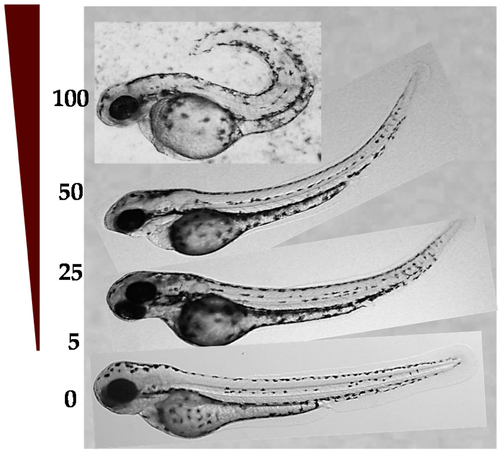- Title
-
Multi-Anti-Parasitic Activity of Arylidene Ketones and Thiazolidene Hydrazines against Trypanosoma cruzi and Leishmania spp
- Authors
- Álvarez, G., Perdomo, C., Coronel, C., Aguilera, E., Varela, J., Aparicio, G., Zolessi, F.R., Cabrera, N., Vega, C., Rolón, M., Rojas de Arias, A., Pérez-Montfort, R., Cerecetto, H., González, M.
- Source
- Full text @ Molecules
|
Dose-response effect of GAT1033 on the curvature of the tail. Incubation concentrations were 0–300 µM for 72 h (illustrated with the brown triangle). The picture at the bottom shows a non-treated embryo at the same developmental stage. |
|
Differential distribution of GAT1033 in embryos with and without chorion. The microscopy images on the left show the eye and parts of the yolk of 24-hpf zebrafish embryos. The intrinsic fluorescence of the compound was revealed using a laser scanning confocal microscope, after 18 h of incubation. The yolk (marked with *) shows a strong autofluorescence under these imaging conditions. The graph on the right shows the quantitation of fluorescence intensity (in arbitrary units AU) in treated embryos with and without chorion. |
|
Characteristic morphology of caffeine treatment on zebrafish embryo at 2.4 mM. The tail of the zebrafish embryo treated with caffeine is like a pig tail. |



